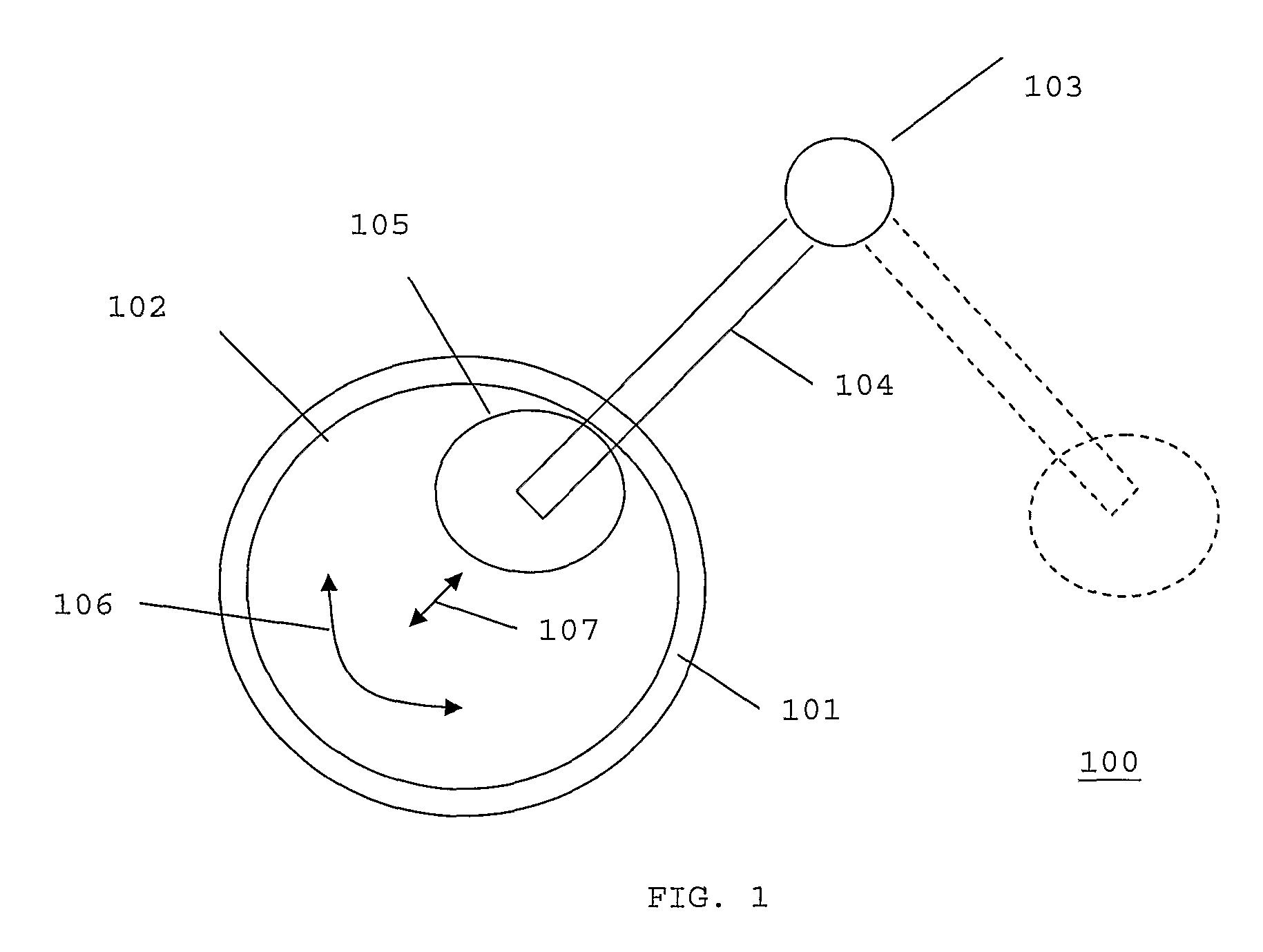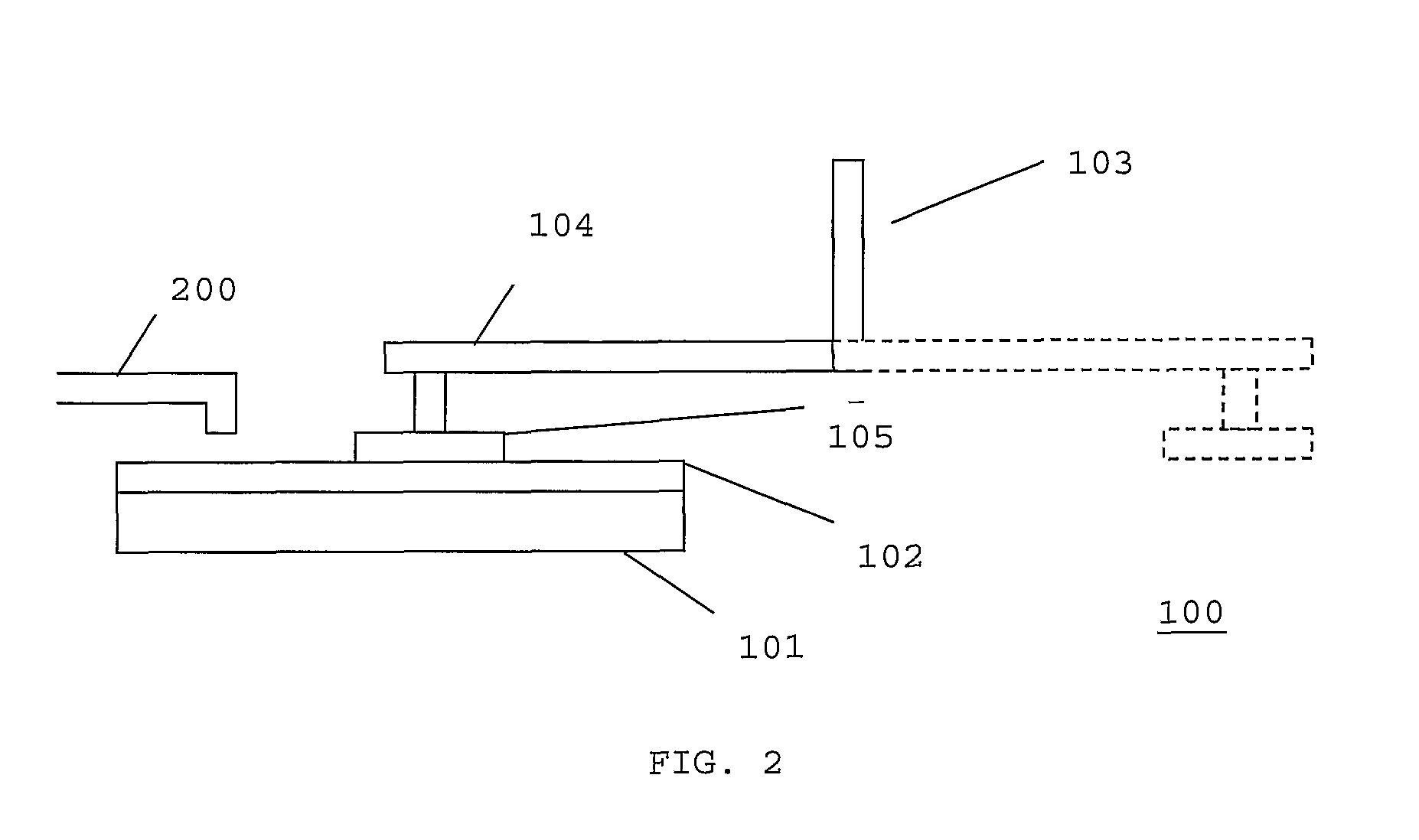System and Method for Removing Particles From a Polishing Pad
a technology of polishing pad and particle removal, which is applied in the direction of grinding machine components, manufacturing tools, and abrasive surface conditioning devices, etc. it can solve the problems of undesirable build-up of particles on the polishing pad, localized differences in the polishing rate, and other abrasives may be used, so as to prolong the life improve the efficiency of material removal, and improve the efficiency and cleanliness of the polishing pad.
- Summary
- Abstract
- Description
- Claims
- Application Information
AI Technical Summary
Benefits of technology
Problems solved by technology
Method used
Image
Examples
Embodiment Construction
[0023]FIG. 1 illustrates a top plan of a polishing pad conditioning system 100 that may be used in a chemical-mechanical polishing process.
[0024]The polishing pad conditioning system 100 includes a platen 101. The platen 101 is arranged to rotate clockwise or counter-clockwise about a fixed or movable axis. A polishing pad 102 is attached to the platen 101 and as such is rotated by the platen 101. The polishing pad 102 is arranged to provide mechanical abrasion for removing a material layer from a substrate (not shown) during a chemical-mechanical polishing process, as is well known to a person skilled in the art.
[0025]The polishing pad conditioning system 100 further includes an optional conditioning device 103 having a conditioning arm 104 that is pivoted to allow the conditioning arm 104 to be disposed either away from the polishing pad 102, as shown by dotted line, or above the polishing pad 102. Attached to the conditioning arm 104, at the opposite end to the pivot, is a condit...
PUM
| Property | Measurement | Unit |
|---|---|---|
| frequency | aaaaa | aaaaa |
| voltage | aaaaa | aaaaa |
| voltage | aaaaa | aaaaa |
Abstract
Description
Claims
Application Information
 Login to View More
Login to View More - R&D
- Intellectual Property
- Life Sciences
- Materials
- Tech Scout
- Unparalleled Data Quality
- Higher Quality Content
- 60% Fewer Hallucinations
Browse by: Latest US Patents, China's latest patents, Technical Efficacy Thesaurus, Application Domain, Technology Topic, Popular Technical Reports.
© 2025 PatSnap. All rights reserved.Legal|Privacy policy|Modern Slavery Act Transparency Statement|Sitemap|About US| Contact US: help@patsnap.com



